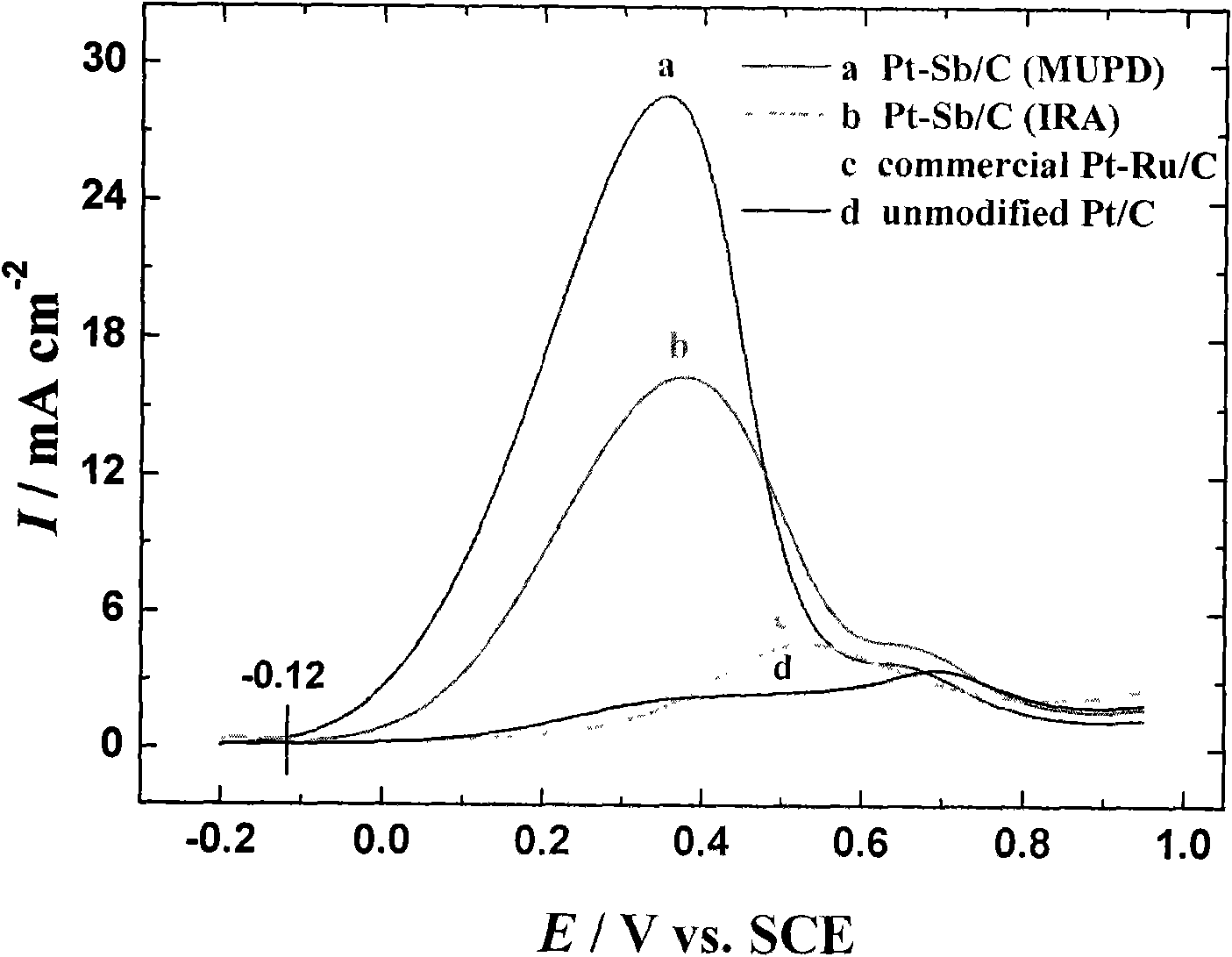Method of modifying platinum base formic acid electrocatalyst
An electrocatalyst, platinum-based formic acid technology, applied in the field of electrochemical catalysis, can solve the problems of difficult realization, unsuitable catalyst production, complex process and the like
- Summary
- Abstract
- Description
- Claims
- Application Information
AI Technical Summary
Problems solved by technology
Method used
Image
Examples
Embodiment 1
[0020] Weigh a certain amount of Pt / C catalyst (Pt loading is 60%), disperse in ultrapure water for 1 h under ultrasonic conditions, and then mix with 0.1-10×10 -3 mol / L antimony potassium tartrate and 1-20×10 -3 Mix mol / L L-ascorbic acid aqueous solution, continue to ultrasonically disperse for 0.5-10min, filter and wash with ultrapure water several times to remove impurity ions, and dry under vacuum at 50°C to obtain Pt-Sb / C powder.
Embodiment 2
[0022] Weigh a certain amount of Pt / C catalyst (Pt loading is 60%), disperse in ultrapure water for 1 h under ultrasonic conditions, and then mix with 0.1-10×10 -3 mol / L antimony potassium tartrate and 1-20×10 -3 Mix mol / L hydrazine hydrochloride aqueous solution, continue to ultrasonically disperse for 0.5-10min, filter and wash with ultrapure water several times to remove impurity ions, and dry under vacuum at 50°C to obtain Pt-Sb / C powder.
Embodiment 3
[0024] Weigh a certain amount of Pt / C catalyst (Pt loading is 60%), disperse in ultrapure water for 1 h under ultrasonic conditions, and then mix with 0.1-10×10 -3 mol / L antimony trioxide and 1-20×10 -3 Mix mol / L L-ascorbic acid + 0.1-1mol / L sulfuric acid solution, continue ultrasonic dispersion for 0.5-10min, filter and wash with ultrapure water several times to remove impurity ions, and dry under vacuum at 50°C to obtain Pt-Sb / C powder.
PUM
| Property | Measurement | Unit |
|---|---|---|
| Size | aaaaa | aaaaa |
Abstract
Description
Claims
Application Information
 Login to View More
Login to View More - R&D
- Intellectual Property
- Life Sciences
- Materials
- Tech Scout
- Unparalleled Data Quality
- Higher Quality Content
- 60% Fewer Hallucinations
Browse by: Latest US Patents, China's latest patents, Technical Efficacy Thesaurus, Application Domain, Technology Topic, Popular Technical Reports.
© 2025 PatSnap. All rights reserved.Legal|Privacy policy|Modern Slavery Act Transparency Statement|Sitemap|About US| Contact US: help@patsnap.com



